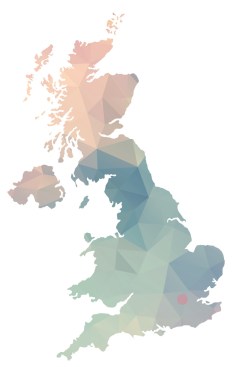For some lighting firms, expanding a business to a new city is the result of a change in personal circumstances: a key designer needs to relocate for family reasons or a prospective employee is unable to move to join the firm at their office. For others, the draw of potential work in a new location, or even on a new continent, provides an opportunity to cultivate additional contacts and grow a firm’s portfolio.
Overall, building a lighting design practice requires many things: capital, vision, flexibility, and an entrepreneurial spirit. Below, leaders from three lighting design firms—Electrolight (which has been branded as 18 Degrees in London), Brian Orter Lighting Design (BOLD), and KGM Architectural Lighting—discuss the motivations, challenges, and benefits of expanding their practices to new cities and countries.
Electrolight/18 Degrees
Paul Beale founded Electrolight in 2004 in Melbourne, Australia, after noticing there were few lighting design professionals in the city, yet he was “always ambitious in wanting to expand the practice within Australia.” Over the next eight years, Beale built a portfolio and reputation for quality work in Melbourne. After a short-lived effort to extend his offices to Sydney, however, Beale realized he was spending an inordinate amount time traveling between the two cities without much to show for it. “I was always an outsider to Sydney,” Beale says. “It became clear to me that you need to be in the location where you have the office.”

So Beale changed his approach. He turned to Donn Salisbury, an established and well-respected lighting designer from Sydney with years of knowledge and a familiarity with the local market. “We had a status as the market leader in Melbourne [and] a beautiful portfolio of built work [that] I was able to bring into the partnership,” Beale says. “Donn was able to bring his little black book of contacts, his integrity, and his local experience. The business has really flourished since.” Salisbury officially joined as the director of Electrolight’s Sydney practice in 2012, and the studio has gone on to design dozens of hospitality, retail, and commercial spaces in Sydney.
Eventually, the Melbourne practice grew to include head of design Jess Perry and director Elisha Howard, who took over the day-to-day operations of the studio from Beale. “I kind of woke up one morning,” Beale says, “and thought, well, if I’ve got someone really good running the Sydney office and some really good people running the Melbourne office, then what difference am I making?” Meanwhile, after 15 years in Australia, Beale and his family felt the pull of their native England, where aging parents and a familiar education system were reason enough to return. Also, professionally, the United Kingdom would provide a new business opportunity. “I just thought it would be a far greater challenge to go to London where no one knows me, to try and build a business from scratch there,” Beale says. “The idea was that we would [also] be able to do genuinely international-scale projects.”
So in 2017, Electrolight launched a sister practice, 18 Degrees, in London with local designer Christopher Knowlton as director. The new firm is dedicated to the “intersection of technology and aesthetics.” While the practices—which includes a San Francisco office of Electrolight, lead by Claudio Ramos, which opened in 2015—all maintain individual portfolios, they often collaborate on large projects and Beale has worked hard to ensure there is a “common philosophical tradition across the company.” While communicating across three continents does have its challenges, maintaining parity in IT systems and processes ensures seamless transitions for times when projects are passed between offices.

“We all want the same things,” Beale says. “We may go about achieving a goal differently in Australia, compared to San Francisco, compared to London. But fundamentally, we all want to make a difference in lighting.”
BOLD
For BOLD founder Brian Orter, multiple factors facilitated the expansion of his New York–based firm to the West Coast, but he came to the decision, in part, after observing a gap in the market. Orter found that there were too few lighting design firms for West Coast projects in need of good lighting design, and decided BOLD could make a true impact. “There are a couple of really good [firms], but not too many,” Orter says. Despite receiving requests for proposals for projects on the West Coast, Orter realized that many of them end up without lighting designers—with architects or manufacturer representatives doing much of the work instead. “Our biggest competition was [often] no lighting designer at all,” Orter says. “I was just tired of losing projects because we didn’t have people there.”
But having a capable and effective staff on the ground required an understanding of the West Coast talent pool from which to populate a studio in Los Angeles. “I wanted to get people who grew up west of the Mississippi—in California or Seattle—who had that different association with nature and Asian influences and the automotive culture,” Orter says. “I wouldn’t have done it if I didn’t know of a few people that I could work with prior.”
What ultimately made Orter’s Los Angeles expansion possible was his confidence in the day-to-day manager of the office back in New York—principal Charlie Dumais. “When I leave New York, I leave knowing that they’re smarter than me. I know they are perfectly capable,” Orter says. “I credit Charlie for a lot of that.”
With Dumais holding down the fort back east, Orter opened the Los Angeles branch of BOLD in 2015. To ensure parity of company systems, standards, and culture, one of his New York employees opted to relocate to help bring the ethos of the original office to the new West Coast location. Orter also trains all new employees at the New York office, he says, so that everyone is “comfortable enough to pick up the phone and say, ‘Hey, I need some help!’ or ‘Can we delegate this?’ or ‘What’s your opinion of this?’ ”
As for the workload, the firm is organized into three studios—two in the New York office and one in Los Angeles—which are responsible for specific projects and clients. While these clearly defined branches ensure that no work falls between the cracks, communication and collaboration between the teams are critical for large-scale projects. “Sometimes we have projects where the design team is in New York, but the projects may be in Los Angeles or Las Vegas and there might be a handoff to the L.A. studio,” Dumais says. “We’ll keep them in the loop throughout, so that when they take over, they’re really informed.”

KGM Architectural Lighting
For Los Angeles–based KGM Architectural Lighting, the decision to expand to the already saturated New York market in 2012 largely reflected the firm’s desire to retain their youngest partner, Martin van Koolbergen. A New Jersey native, van Koolbergen had spent 12 years on the West Coast. But when firm leaders realized van Koolbergen’s desire to move closer to his family, they took a leap of faith. “Martin was already our youngest partner and he had great potential,” says KGM partner and CEO Michael Gehring. “[We knew] we’d rather be with him than without him, so it was worth the risk to try opening a New York office.”
To do so successfully would require deliberate logistics and conservative fiscal planning to both protect the Los Angeles practice and adequately support van Koolbergen in New York. “We wound up starting the office by renting two desks from an architect I knew,” van Koolbergen says of minimizing up-front costs. In addition to attending networking events and functions to learn more about the New York market, van Koolbergen also spent considerable time maintaining his remaining Los Angeles projects and clients. To avoid duplicative administrative infrastructure costs, the New York office still relies on the Los Angeles–based IT and marketing departments for things like computer support and proposals. Though this can be challenging, especially when a computer crashes at 3 a.m. PST, it saves money and provides parallel systems and protocols for all employees to follow. “I’ve learned a great deal about IT, I’ll tell you that,” van Koolbergen jokes.
Since officially launching the studio five years ago, the New York practice has grown conservatively, by van Koolbergen’s estimation, adding one person per year as their portfolio has expanded. And while the internet and technology have undoubtedly improved communication in our ever-shrinking world—for lighting designers, location and proximity can still play a key role in winning work. “He’s got a number of clients that are based in New York that we would have never had if we didn’t have a New York office,” Gehring says.
With the New York office up and running, KGM is currently in a trial phase on a small Atlanta office run by senior associate Patrick McCollough, who also needed to relocate to be closer to family. Ultimately, Gehring takes the decision to expand and boils it down to three factors: “We need the right person, the right place, and the right time,” he says. “If we don’t have those three, it’s not going to work.”
Looking Ahead
Deciding if and when to expand to new markets is an issue that can only be addressed by individual firms. But in an industry seeking to grow its workforce, lighting design practices need to think creatively about how they invest in their employees and business plans. •
